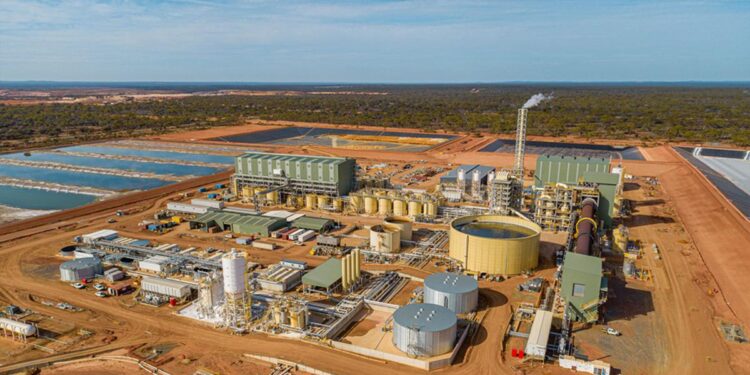As global demand for critical minerals surges, Europe is intensifying efforts to reduce its reliance on China for rare earth elements—essential components in everything from electric vehicles to renewable energy technologies. In a strategic move to secure its supply chains and bolster technological sovereignty, European governments and industries are investing heavily in alternative sources, recycling initiatives, and domestic production. This article explores how Europe is navigating geopolitical challenges and market dynamics to carve out a more independent future in the rare earth sector.
Europe’s Strategic Drive to Secure Rare Earth Supply Chains
Europe’s ambition to reduce its dependency on China for rare earth elements is gaining momentum as policymakers and industry leaders rally around a unified plan. Recognizing the strategic importance of these critical minerals — essential for everything from electric vehicle batteries to wind turbines and high-tech defense systems — the European Union has initiated a multi-pronged approach involving investment in domestic mining, refining capabilities, and recycling technologies. This concerted effort aims not only to diversify supply chains but also to build resilience against geopolitical risks and potential export restrictions.
Key actions driving this transformation include:
- Launching new mining projects within Europe’s borders, particularly in countries like Sweden, Finland, and Portugal, with a focus on environmentally sustainable practices.
- Forging partnerships with allied nations outside China to ensure stable access to raw materials, including Africa and the Indo-Pacific region.
- Accelerating innovation in the recycling of rare earth metals from electronic waste to create a circular economy that reduces primary material needs.
| Strategy | Focus Area | Expected Impact |
|---|---|---|
| Domestic Mining | Exploration & Extraction | 30% supply self-sufficiency by 2030 |
| International Partnerships | Raw Material Imports | Diversified sourcing reduces dependence |
| Recycling Innovations | Resource Efficiency | Cut waste by 40% in next decade |
Challenges and Opportunities in Diversifying Away from Chinese Dominance
Europe’s ambition to reduce its reliance on China for rare earth elements faces complex hurdles intertwined with geopolitical, economic, and technological factors. Raw material extraction is capital-intensive and environmentally sensitive, with long lead times for developing new mines or recycling facilities. Moreover, China’s well-established processing infrastructure creates an almost insurmountable competitive advantage. European countries must navigate not only regulatory and environmental standards that are often more stringent than their Chinese counterparts but also coordinate efforts across national borders to create a cohesive supply chain.
However, these challenges come paired with significant opportunities for innovation and economic growth. Investments in advanced extraction techniques, sustainable mining practices, and circular economy models—such as urban mining and material reuse—are gaining momentum. Governments and private sectors across Europe are strengthening partnerships to support research and infrastructure development. The table below highlights key facets shaping this landscape:
| Aspect | Challenges | Opportunities |
|---|---|---|
| Supply Security | Dependence on imports, supply chain disruptions | Regional mine development, diversified sources |
| Environmental Impact | High ecological footprint, stringent regulations | Eco-friendly technologies, recycling innovation |
| Economic Viability | High extraction costs, price volatility | Public-private funding, green tech subsidies |
- Strategic alliances with non-Chinese producers are expanding.
- Research initiatives are accelerating breakthroughs in rare earth processing.
- Policy frameworks are being tailored to incentivize sustainable mining practices.
Policy Measures and Investment Priorities to Boost European Rare Earth Production
European policymakers have unveiled a robust framework to mitigate the continent’s reliance on China for rare earth elements, crucial for green technology and defense industries. Central to this strategy is a suite of targeted subsidies, streamlined permitting processes, and research funding boosts designed to accelerate domestic rare earth mining and processing projects. By prioritizing the establishment of mining sites in resource-rich countries like Sweden and Finland, the EU aims to secure a sustainable, environmentally responsible supply chain. Moreover, regulatory reforms are being enacted to shrink the typical project deployment timeline, which currently hampers the competitiveness of European ventures against more mature operations overseas.
Investment priorities mirror this regulatory momentum, focusing heavily on technological innovation and public-private partnerships. Funding is channelled into next-generation extraction techniques and recycling technologies that could significantly reduce Europe’s raw material dependency. The European Commission has also proposed creating a dedicated Rare Earths Innovation Fund to support startups and scale-ups working on refining processing efficiency and minimizing environmental footprints. Below is an outline of the key policy measures and investment areas driving Europe’s rare earth ambitions:
- Financial Support: €2 billion in grants and loans dedicated to rare earth project development
- Regulatory Overhaul: Fast-tracking environmental permits for rare earth mining and refining facilities
- Innovation Fund: Capital infusion for advanced extraction and recycling startups
- Supply Chain Resilience: Initiatives to strengthen partnerships with allied nations and diversify import sources
- Workforce Development: Training programmes to build specialized skills in the mining and processing sectors
| Policy Element | Focus Area | Expected Impact |
|---|---|---|
| Funding Boost | To Conclude
As Europe accelerates its efforts to reduce reliance on Chinese dominance in the rare earth sector, the unfolding strategies underscore a broader geopolitical and economic reshaping. With investments in domestic mining, recycling technologies, and diversified supply chains, the continent aims not only to secure critical materials essential for its green transition and technological ambitions but also to assert greater strategic autonomy. While challenges remain, Europe’s pursuit of rare earth independence marks a significant chapter in the global competition over resources that underpin the future of industry and innovation. |














Italy to Deport Egyptian Imam After Controversial Comments at Pro-Palestine Rally